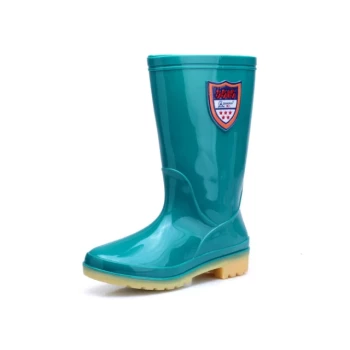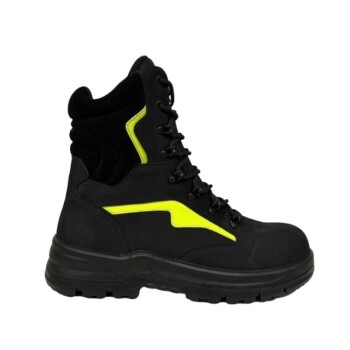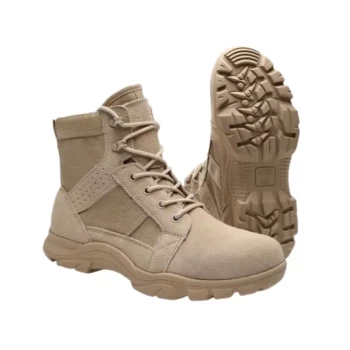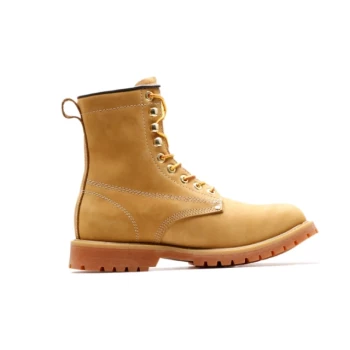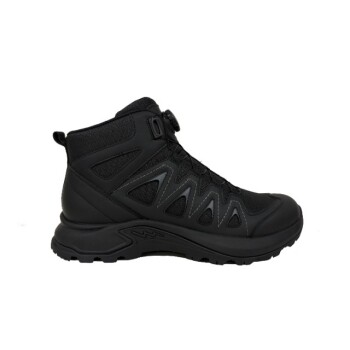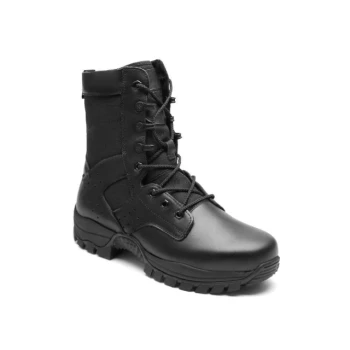At their core, walking boots are defined by three key characteristics: maximum support, robust protection, and exceptional durability. They are the heaviest and most substantial category of hiking footwear, specifically engineered to provide stability and safety during long-distance hikes over rugged, unpredictable terrain.
The essential trade-off of a walking boot is simple: it sacrifices the low weight and flexibility of a shoe for the uncompromising stability and protection required for challenging environments and carrying heavy loads.
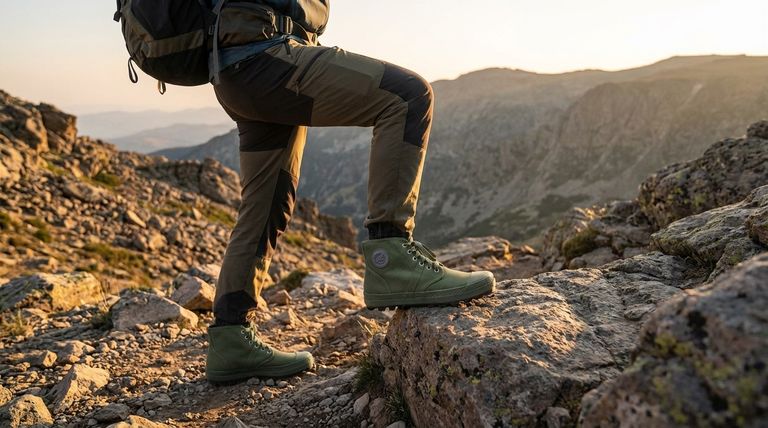
The Anatomy of a True Walking Boot
To understand why walking boots are the preferred tool for serious treks, we need to examine their specific components. Each feature is a direct solution to the problems presented by rough ground, long distances, and heavy packs.
Uncompromising Ankle Support
The most visible feature of a walking boot is its high-cut design, which extends over the ankle.
This structure is critical for stabilizing the foot and lower leg, significantly reducing the risk of sprains and twists when navigating rocky paths, scree slopes, or uneven ground.
A Foundation of Stiffness and Stability
Walking boots feature a very stiff sole, a characteristic that provides a stable platform on small, precarious footholds like rock edges.
This rigidity serves another crucial purpose: it prevents your foot from over-flexing on uneven surfaces, which reduces muscle fatigue over many miles and protects you from sharp objects underfoot.
Built for Maximum Protection
These boots are built to be a fortress for your feet. They almost always include reinforced toe boxes and heel counters to guard against impacts from rocks and roots.
The uppers are constructed from highly durable materials, often featuring polyurethane-coated leather rands (a protective strip where the upper meets the sole) and triple-stitching to withstand heavy use and abrasion.
The Role of Weight and Durability
Walking boots are unapologetically the heaviest option. This weight is a direct result of their durable construction.
Materials like full-grain leather, while heavier, can last for thousands of miles with proper care, such as regular cleaning and conditioning. The weight is the price of long-term reliability and protection.
Understanding the Trade-offs
Choosing a walking boot means accepting a specific set of compromises. Understanding these trade-offs is key to knowing if a boot is the right choice for your needs or potentially overkill.
Weight vs. Agility
The primary drawback is weight. The same robust construction that provides support also demands more energy with every step. For fast-and-light adventures on simple trails, this can lead to premature fatigue.
Stiffness vs. Ground Feel
A stiff sole that provides stability on technical terrain also limits your ability to feel the ground beneath you. On smooth, well-maintained paths, this can feel clumsy and disconnected compared to a flexible hiking shoe.
Protection vs. Breathability
The thick, durable materials that protect your feet are inherently less breathable than the lightweight mesh used in trail shoes. In hot weather, this can lead to warmer, sweatier feet if you're not wearing appropriate moisture-wicking socks.
Making the Right Choice for Your Hike
The decision to use a walking boot should be based entirely on the demands of your intended activity.
- If your primary focus is multi-day trekking or rugged, rocky terrain: The superior ankle support and protective stiffness of a true walking boot are non-negotiable for your safety and comfort.
- If your primary focus is carrying a heavy backpack: The boot's rigid sole and ankle support are critical for providing the stability needed to manage a heavy load safely.
- If your primary focus is day hikes on well-maintained trails: A lighter, more flexible hiking shoe or trail runner will likely provide better comfort and agility for your needs.
Ultimately, choosing the right footwear is about matching the tool to the task, ensuring your feet are supported and protected no matter where the trail leads.
Summary Table:
| Key Characteristic | Primary Benefit | Ideal For |
|---|---|---|
| High-Cut Ankle Support | Prevents sprains, stabilizes foot/leg | Rugged, uneven terrain |
| Stiff, Rigid Sole | Reduces fatigue, protects from sharp objects | Carrying heavy loads |
| Durable Materials (e.g., leather) | Long-lasting protection, abrasion resistance | Multi-day treks, harsh conditions |
Need Durable, High-Performance Walking Boots for Your Customers?
As a large-scale manufacturer, 3515 produces a comprehensive range of footwear for distributors, brand owners, and bulk clients. Our production capabilities encompass all types of shoes and boots, including walking boots built with the superior support and durability detailed in this article.
We can help you supply your market with reliable footwear that meets the demands of serious hikers. Contact us today to discuss your manufacturing needs and get a quote!
Visual Guide
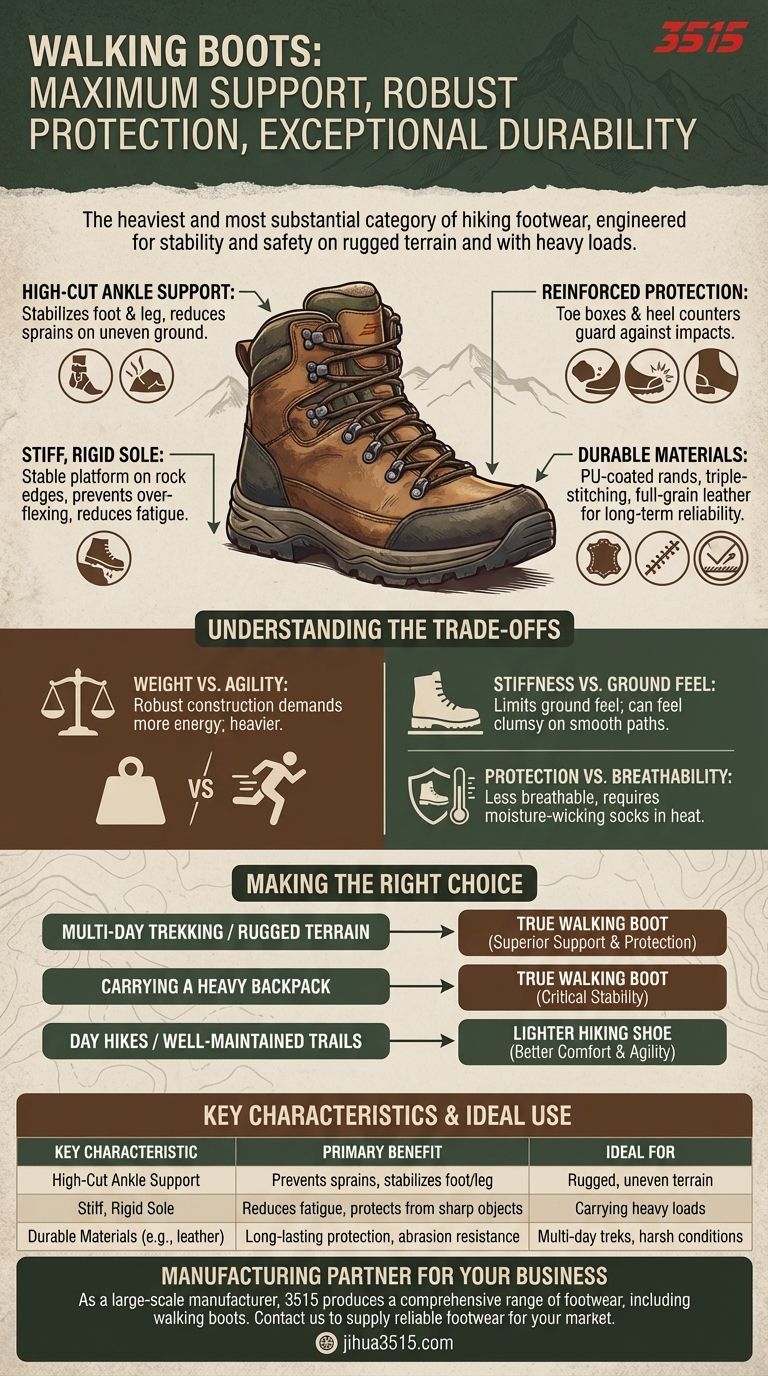
Related Products
- Factory-Direct Wholesale Canvas Boots with High-Traction Rubber Soles
- High Performance Fire-Retardant Waterproof Safety Boots
- Premium Wholesale Waterproof Safety Boots High Performance Protection for Industrial Markets
- Premium Wholesale Wheat Nubuck Safety Boot with Rapid Lacing System
- Premium Grain Leather Safety Boots for Bulk Supply
People Also Ask
- What is a vulcanized sole? Discover the Secret to Superior Flexibility and Grip
- What types of rubber are typically employed in non-slip footwear soles? Your Guide to Maximum Grip and Safety
- What should be avoided when storing boots with outsoles? Protect Your Investment from Dry Rot & Decay
- What are the advantages of rubber soles in safety boots? Unbeatable Grip & Durability
- Why is rubber commonly used for non-slip soles? The Science of Superior Grip








